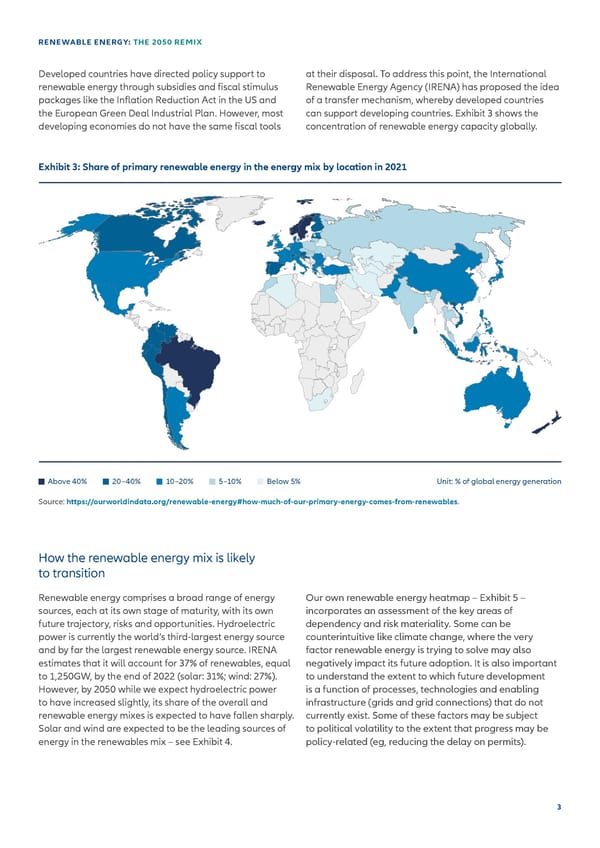RENEWABLE ENERGY: THE 2050 REMIX Developed countries have directed policy support to at their disposal. To address this point, the International renewable energy through subsidies and 昀椀scal stimulus Renewable Energy Agency (IRENA) has proposed the idea packages like the In昀氀ation Reduction Act in the US and of a transfer mechanism, whereby developed countries the European Green Deal Industrial Plan. However, most can support developing countries. Exhibit 3 shows the developing economies do not have the same 昀椀scal tools concentration of renewable energy capacity globally. Exhibit 3: Share of primary renewable energy in the energy mix by location in 2021 Above 40% 20–40% 10–20% 5–10% Below 5% Unit: % of global energy generation Source: https://ourworldindata.org/renewable-energy#how-much-of-our-primary-energy-comes-from-renewables. How the renewable energy mix is likely to transition Renewable energy comprises a broad range of energy Our own renewable energy heatmap – Exhibit 5 – sources, each at its own stage of maturity, with its own incorporates an assessment of the key areas of future trajectory, risks and opportunities. Hydroelectric dependency and risk materiality. Some can be power is currently the world’s third-largest energy source counterintuitive like climate change, where the very and by far the largest renewable energy source. IRENA factor renewable energy is trying to solve may also estimates that it will account for 37% of renewables, equal negatively impact its future adoption. It is also important to 1,250GW, by the end of 2022 (solar: 31%; wind: 27%). to understand the extent to which future development However, by 2050 while we expect hydroelectric power is a function of processes, technologies and enabling to have increased slightly, its share of the overall and infrastructure (grids and grid connections) that do not renewable energy mixes is expected to have fallen sharply. currently exist. Some of these factors may be subject Solar and wind are expected to be the leading sources of to political volatility to the extent that progress may be energy in the renewables mix – see Exhibit 4. policy-related (eg, reducing the delay on permits). 3
 Renewable energy Page 2 Page 4
Renewable energy Page 2 Page 4